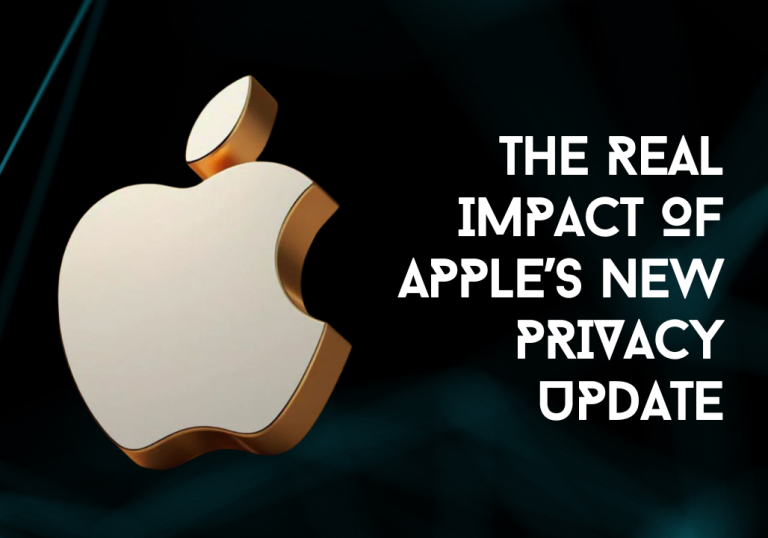How To Establish A Routine For Email Security Maintenance And Monitoring
Introduction
Email is more than just a communication tool; it’s the digital lifeline for virtually every business and personal connection. Yet, for many, email security is an afterthought, managed only when a crisis hits. Imagine driving your car for years without an oil change or tire rotation. Eventually, it’s going to break down, likely at the worst possible moment. We’ll guide you through establishing a practical, phased routine, from daily vigilance to strategic reviews. You’ll discover how the smart use of the right tools can transform your email from a potential vulnerability into a stronghold. The benefits of email security maintenance are immense: peace of mind, protection from costly breaches, and the assurance that your most vital communications are secure.
Initial Email Security Assessment
You can’t protect what you don’t understand. Before you can truly build a robust email security maintenance routine, you need to know exactly what you’re defending and where your current weaknesses lie. This initial assessment sets the stage for everything that follows.
Security Audit Fundamentals
Think of an email security audit as a health checkup for your entire email system. It’s checking how well your defenses are performing right now. This process in email security maintenance involves a thorough vulnerability assessment for email systems, meticulously searching for any weak spots or cracks that attackers could exploit.
It isn’t just about technical glitches; it’s also about evaluating your risk evaluation through threat modeling, essentially asking: “Who might want to attack us, what are they after, and how would they try to get it?” The goal is to establish a security posture documentation, creating a clear view of your current security health. This document becomes your starting point, highlighting what needs immediate attention and what can be improved over time.
Infrastructure Review
Once you understand your risks, it’s time to inspect the very foundation of your email operations. This involves a comprehensive review of your email server security configuration. Is it set up securely? Are unnecessary services disabled? Equally critical is verifying your authentication protocols, specifically SPF, DKIM, and DMARC.
These are the digital signatures and checks that prevent attackers from impersonating your domain to send phishing emails. You’ll also confirm your encryption standards implementation, ensuring that emails are properly secured in transit and at rest. Finally, a close look at access controls and user permissions is vital. Who can access what? Are permissions granted on a “least privilege” basis, meaning users only have the access they absolutely need? This review ensures your email infrastructure isn’t just running, but running securely.
Daily Security Monitoring Tasks
Once you’ve built your defenses, vigilance becomes your most important daily chore in email security maintenance. Think of it like watching the security cameras. This constant observation helps you spot trouble the moment it appears, giving you the critical time needed to react.
Automated Monitoring Setup
Automating your monitoring is like having an army of tireless digital guards. You’ll want to configure realtime alerts that notify you the second something suspicious happens, whether it’s an unusual login attempt or a sudden surge in outbound emails. Email traffic analysis tools provide insights into the volume and patterns of your email flow, making anomalies easy to spot. Finally, integrating threat intelligence feeds is crucial. These feeds continuously update your systems with information about the latest threats and attack methods, making your defenses smarter and more adaptive every single day.
Daily Check Procedures
Even with automation, a quick manual check can catch things computers might miss. Establishing security logs review protocols means someone regularly glances over system logs for unusual entries. Monitoring failed authentication attempts is a simple yet powerful way to detect bruteforce attacks or unauthorized access attempts. Keeping an eye on spam and phishing detection rates tells you if your filters are working correctly and if new, sneaky campaigns are targeting your organization. Lastly, tracking system performance metrics can often reveal hidden security issues; a sudden slowdown or unusual resource usage could indicate a compromise, making these quick daily checks in email security maintenance are invaluable for immediate threat detection.
Weekly Maintenance Routines
Beyond daily vigilance in your email security maintenance, weekly tasks are about consistent care and ensuring your systems remain resilient against evolving threats. This is your regular tuneup, keeping everything running smoothly and securely.
Security Updates and Patches
The digital world never stands still, and neither do attackers. Regularly deploying security patches fixes known vulnerabilities that bad actors love to exploit. Think of patches as rapid repairs for newly discovered weaknesses in your software. Keeping your antivirus definitions updates current ensures your systems can recognize and neutralize the latest malware strains. These weekly updates are crucial for keeping your defenses relevant and effective.
User Activity Analysis
Understanding how your users interact with email can reveal security risks that technical scans might miss. Email usage patterns assessment involves looking for behaviors that deviate from the norm, like an employee sending an unusual number of emails late at night, or accessing accounts from unfamiliar locations. This feeds into anomaly detection procedures and user behavior analytics review, helping identify potentially compromised accounts or insider threats. It’s like spotting someone wearing a disguise in a crowd.
Quarterly Security Assessments
Every three months, it’s time for a reality check. These assessments in your email security maintenance routine go beyond routine checks, actively probing your security monitoring as an attacker would.
Technical Maintenance
Beyond weekly patches, monthly technical maintenance goes deeper into the health of your systems. This form of security monitoring includes ensuring your email archiving and retention management is working correctly, preserving important communications while deleting what’s no longer needed, in line with legal requirements. Critically, backup systems verification ensures that your data backups are actually functional and can be restored if the worst happens.
Policy and Procedure Updates
Based on the insights gained from your testing and security monitoring, quarterly reviews are the perfect time to refine your strategic security documents. This includes security framework modifications, adapting your overall approach based on new threats or technologies. Implementing best practices means staying current with industryleading recommendations. Regulatory compliance updates ensure you’re always aligned with evolving legal requirements, preventing costly fines.
Annual Strategic Reviews
Once a year, it’s time for the ultimate security email security maintenance. This is where you zoom out, review everything, and set the long term course for your email security strategy.
Comprehensive Security Audit
An annual third party security assessment brings in outside experts to provide an unbiased, indepth evaluation of your entire email security posture. This is crucial for identifying blind spots and ensuring your internal teams aren’t overlooking anything. Business continuity planning focuses on how your organization will continue operations if your email system is severely compromised or taken offline. Finally, an ROI analysis for security investments helps you understand the return on your security spending, ensuring you’re getting the most bang for your buck.
Essential Tools and Technologies
You don’t have to tackle email security maintenance and security monitoring alone. A suite of powerful tools and technologies can automate much of the heavy lifting and provide crucial insights.
Security Monitoring Solutions
To maintain constant email security maintenance, you’ll rely on a few key types of tools. SIEM systems (Security Information and Event Management) are like central brains that collect security logs from all your systems, including email, and analyze them for threats, providing a unified view of your security posture. Email security gateways sit at the perimeter of your network, acting as powerful filters that scan incoming and outgoing emails for malware, phishing attempts, and spam before they ever reach your inbox. DLP (Data Loss Prevention) tools help prevent sensitive information from accidentally or intentionally leaving your organization via email.
Escalation Procedures
Even with a dedicated team, incidents will happen. Clearly defined incident response team protocols ensure that when a security event occurs, the right people are notified and act swiftly. Management reporting structures ensure that leadership is kept informed of significant incidents and the overall security posture. External vendor coordination might be necessary if you rely on thirdparty security services or need to report breaches to external authorities. Finally, having crisis communication plans ready ensures that you can transparently and effectively communicate with stakeholders, customers, and the public if a major email security incident impacts your organization.
Key Performance Indicators (KPIs)
How do you know if your email security maintenance routine is actually working? By measuring it! Key Performance Indicators (KPIs) help you track your progress and identify areas for improvement.
- Security Metrics
These numbers give you a snapshot of your defensive effectiveness. Email threat detection rates show how successfully your systems are identifying malicious emails. False positive ratios tell you how many legitimate emails are incorrectly flagged as threats, which can impact user productivity.
2. Compliance Tracking
Beyond technical metrics, you need to track how well you’re meeting your legal and internal obligations. And most importantly, tracking security incident frequency allows you to see if your efforts are reducing the number of successful attacks over time.
3. Documentation and Reporting
Your email security maintenance routine isn’t complete without clear, consistent documentation. It’s the memory of your security program, essential for learning, compliance, and strategic decisionmaking.
4. Record Keeping
Detailed record keeping is vital. This includes maintaining comprehensive security maintenance logs, documenting every update, patch, and configuration change. Incident documentation provides a clear history of every security event, from its detection to resolution. Finally, compliance reporting archives keep a historical record of how you’ve met various regulatory requirements, invaluable during audits.
5. Executive Reporting
Translating technical security efforts into understandable business impact is key for leadership.Risk assessment summaries communicate the most pressing threats and their potential impact. Budget justification reports explain why specific security investments are needed. And strategic recommendations propose long term plans to further enhance email security, helping leadership make informed decisions about future investments and priorities.
Conclusion
Establishing a routine for email security maintenance and monitoring isn’t a luxury; it’s a fundamental requirement! By systematically implementing daily checks, weekly tuneups, monthly evaluations, quarterly deep dives, and annual strategic planning, you build layers of defense that adapt and strengthen over time.
Remember, the goal isn’t just to react to threats but to proactively prevent them, ensuring your email communications remain secure and reliable. Measuring your success with security metrics and diligent documentation provides the insights needed for continuous improvement and futureproofing your email security programs. This approach offers peace of mind and solid protection for your most vital digital asset.
To automate your processes and really become attack proof, request a demo of our AI Agents We’re here to help you navigate the complexities of the modern digital age.






